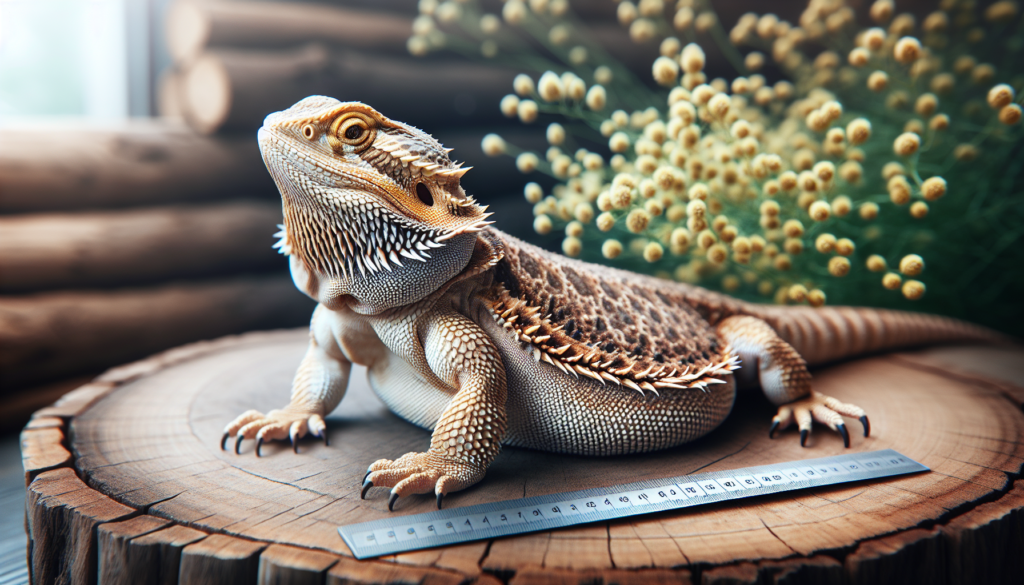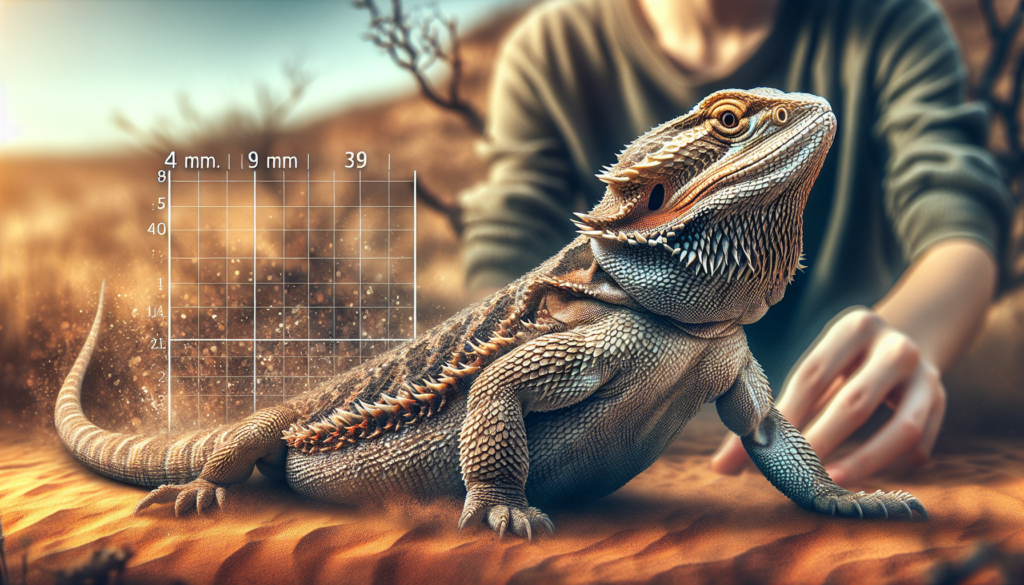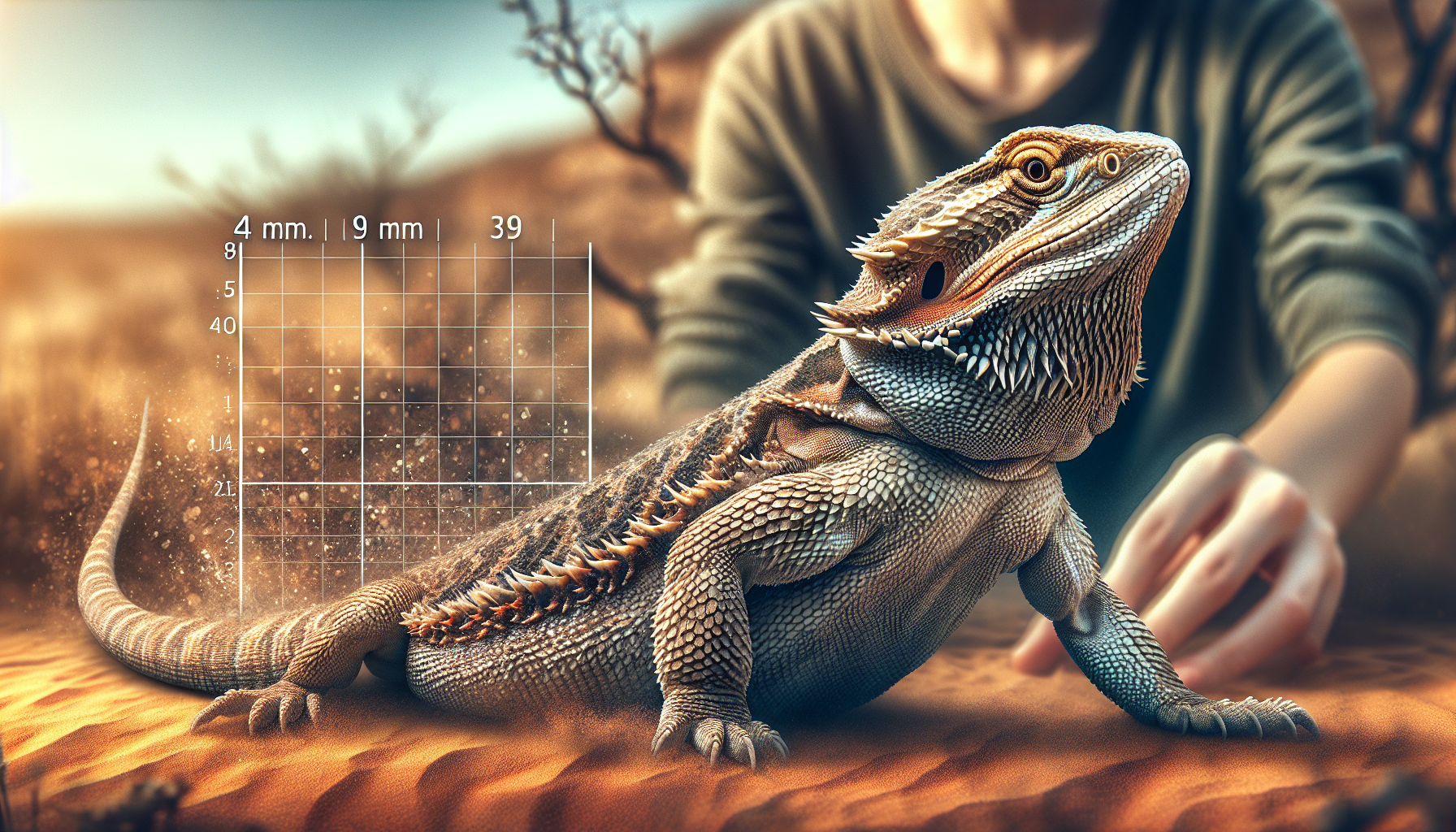Have you ever wondered about the fascinating world of bearded dragons? In this article, we will explore the intriguing subject of understanding the size and weight of these unique reptiles. Delving into their characteristics and habits, we aim to provide you with a comprehensive overview of their physical attributes. So, whether you’re a bearded dragon enthusiast or simply curious about these captivating creatures, join us as we embark on a journey to unravel the mysteries surrounding their size and weight.

Understanding the Size and Weight of Bearded Dragons
Bearded dragons are fascinating reptiles that make popular pets due to their unique appearance and docile nature. Understanding their size and weight is crucial for their overall health and well-being. In this article, we will explore the physical characteristics of bearded dragons, factors that affect their size and weight, measurement units used to assess them, average size and weight of adult bearded dragons, variations based on gender, size and weight of hatchlings, growth rate, ideal size and weight, and the importance of monitoring their size and weight.
Physical Characteristics of Bearded Dragons
To better understand the size and weight of bearded dragons, it is essential to explore their physical characteristics. Bearded dragons have a distinctive body structure, with a broad triangular-shaped head and a stout body covered in scales. These scales not only provide protection but also contribute to their coloration. Bearded dragons come in various color morphs, including vibrant oranges, reds, browns, and yellows. Their head, neck, and tail feature spiny scales, and they possess long limbs with sharp claws that aid in climbing and movement. Another distinguishing feature of bearded dragons is their unique facial structures, including prominent cheek scales and a “beard” made of spiky scales that they can puff out when threatened or to display dominance.
Factors Affecting the Size and Weight of Bearded Dragons
Several factors influence the size and weight of bearded dragons. Genetic factors play a significant role, as specific traits are inherited from their parents. However, diet and nutrition are also crucial determinants. Bearded dragons require a balanced diet consisting of live insects, such as crickets and mealworms, as well as dark leafy greens and vegetables. Inadequate nutrition can lead to stunted growth or obesity. Moreover, the environment and habitat conditions, including temperature, humidity, and habitat size, can directly impact their growth. Their overall health and wellness, including parasites or diseases, can affect their size and weight. Additionally, age and lifespan play a role, as younger dragons will experience more growth compared to adults. Lastly, activity level and exercise also contribute to their size and weight, as more active dragons tend to be leaner and have better muscle tone.
Measurement Units for Size and Weight
When discussing the size and weight of bearded dragons, it is essential to understand the common measurement units used. Size is usually measured from the snout to the vent, which refers to the distance from the tip of the nose to the base of the tail. Common units for measuring size include inches and centimeters. Weight, on the other hand, is typically measured in grams or ounces. It is essential to be familiar with these measurement units to accurately track the growth and assess the overall health of bearded dragons. Additionally, having an understanding of unit conversion between inches and centimeters or grams and ounces can be helpful when analyzing various resources and guides.

Average Size and Weight of Adult Bearded Dragons
Adult bearded dragons exhibit a range of sizes and weights, influenced by various factors mentioned earlier. On average, adult bearded dragons can measure between 18 to 24 inches (45 to 60 centimeters) in length from snout to vent. However, it is worth noting that some individuals may exceed or fall short of this range. In terms of weight, adult bearded dragons can typically weigh between 300 to 600 grams (11 to 21 ounces). Similarly, weight can vary among individuals based on genetics, diet, and overall health.
Variations in Size and Weight Based on Gender
There are noticeable variations in the size and weight of bearded dragons based on their gender. Males tend to be larger and heavier than females. Male bearded dragons can reach lengths of 20 to 24 inches (50 to 60 centimeters) and weigh between 400 to 600 grams (14 to 21 ounces). Females, on the other hand, are generally smaller, ranging from 18 to 22 inches (45 to 55 centimeters) in length and weighing between 300 to 450 grams (11 to 16 ounces). These gender-based differences are known as sexual dimorphism.
Size and Weight of Bearded Dragon Hatchlings
Understanding the size and weight of bearded dragon hatchlings is essential for proper care during their early stages of life. When born, bearded dragon hatchlings are relatively small compared to adult dragons. On average, they measure about 3 to 4 inches (7.6 to 10 centimeters) in length and weigh around 5 to 8 grams (0.18 to 0.28 ounces). These tiny creatures go through rapid growth during their first year, and it is crucial to monitor their size and weight to ensure healthy development.
Growth Rate of Bearded Dragons
Bearded dragons undergo different growth phases throughout their lives. During their first year, they experience significant growth spurts, with their size nearly doubling in a short period. As hatchlings, bearded dragons grow rapidly, adding new length and weight within a matter of weeks. The estimated growth rate may vary among individuals but is generally around 1 inch (2.54 centimeters) per month during the first year. After the first year, their growth rate slows down gradually. Bearded dragons can continue to grow slowly until they reach their adult size and weight, which is typically achieved by the age of two.
Ideal Size and Weight for Bearded Dragons
Having an understanding of the ideal size and weight for bearded dragons is essential for their overall health and well-being. To be considered healthy, they should fall within the optimal size range of 18 to 24 inches (45 to 60 centimeters) in length from snout to vent. Regarding weight, an ideal bearded dragon should weigh between 300 to 450 grams (11 to 16 ounces). It is important to note that individual dragons may vary slightly from these averages, so it is crucial to consider other factors such as genetics, diet, and overall health when assessing their size and weight.
Importance of Proper Size and Weight for Bearded Dragons
Maintaining the proper size and weight is vital for the overall health and well-being of bearded dragons. Distorted growth due to inadequate nutrition, improper temperature or habitat conditions, or underlying health issues can have detrimental effects on their physical and mental health. Overweight or obese bearded dragons may face difficulties in movement, digestion, and other physiological processes. On the other hand, stunted growth can indicate underlying health problems or poor husbandry practices. By ensuring that bearded dragons maintain an appropriate size and weight, their quality of life can be significantly improved.
Monitoring the Size and Weight of Bearded Dragons
Regular monitoring of the size and weight of bearded dragons is essential to detect any abnormalities or health issues promptly. By measuring their length and weighing them periodically, you can track their growth rate and compare it to expected milestones. Additionally, signs of abnormal or unhealthy size, such as drastic weight loss or excessive weight gain, should be closely monitored. If you notice any concerning changes or have questions regarding their size and weight, consulting a herpetologist or veterinarian who specializes in reptiles is recommended. They can provide guidance, assess their health, and suggest growth charts specific to bearded dragons to assist in monitoring their progress.
By understanding the size and weight of bearded dragons and implementing appropriate care practices, you can ensure that your scaly companion thrives and enjoys a happy and healthy life. Remember to provide a balanced diet, maintain optimal habitat conditions, and regularly monitor their growth to support their well-being.
